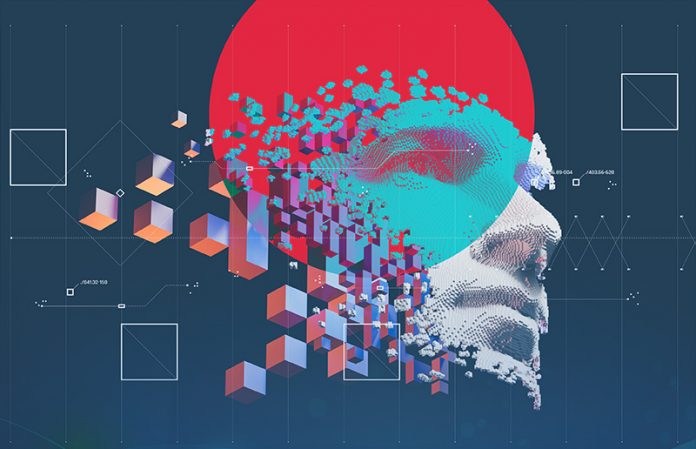By Mario Raich, Simon L. Dolan, Dr. Dave Ulrich and Claudio Cisullo
Every generation wants to improve on the previous generation; however, this generation risks breaking this tradition and becoming a vexing terrible legacy to future generations!
The article offers a future narrative of what human uniqueness may mean in view of the fast and disruptive developments in Artificial Intelligence (AI), and seconded by the development of Cyber-Reality. In today’s times of upheaval, it is becoming paramount to take a serious and comprehensive look at the future and clearly decide what future we and the next generations will have.
The future suggests two threats/challenges humanity might face. The first group of challenges involve the so called “Danger Zone”, which includes themes recognized by many such as: degradation of the environment (climate change), social unrest (migration and diversity), the COVID-19 pandemic and future pandemics, and political violent conflicts (Raich and Dolan 2008).1 The second group of challenges can be clustered around the fast and often disruptive development of the AI technology.
The Danger Zone and AI technology are already reshaping our lives and will most likely have greater impact on the future of work. While the coronavirus pandemic will likely be managed in the next few years, crossing the danger zone may take until mid of the century, and we will need every help we can get. The AI technology can become part of the solution.
Nevertheless, a number of questions remain about the AI challenges: what will happen to the workforce? How will people interface with this new technology? Will most jobs be replaced by automation? Will new jobs emerge? How will AI reinvent the economy, business, and work?
Many of these questions revolve around the role of individuals in the future. In this article, we offer a holistic view of the highly complex, dynamic, and ever transforming “human uniqueness”, by comparing it to the uniqueness of AI-based technology. We envision intelligent collaboration between human and machines, which will lead to the collaboration of Super-Minds and AI-based smart machines and systems in a Meta-Mind-Society in the foreseeable future (Raich et al, 2019).2
The human/AI technology collaboration is simple to describe but difficult to implement. It requires continual investment into both the development of AI-based technology, and the development and deployment of human uniqueness. This collaboration calls for a lifetime education so that smart machines can connect with ever smarter individuals by finding synergy between people and technology. Finding synergy between people and technology is a very relevant issue as digital (AI) smart machines are quickly evolving, and people need to catch up and evolve as well.
Prior to the development of our arguments, it is worth mentioning that we are looking at human uniqueness in comparison to smart machines and artificial intelligence, but we do not claim that each and every AI technology encompasses all unique characteristics. The purpose of this paper is to single out the differences between humans and machines. It is about what humans are able to do better and vice versa. This is not about a very distant future, because we cannot foresee today how far the development on both sides can go, but we can make predictions about a foreseeable future.
As of today, the machines are merely mimicking humans. In the future, they may be performing activities that humans cannot do. But we always need to be aware of the fact that this context in which machines operate is totally different from the human context. For example, machines can mimic facial expression or the human voice, but they do not experience any feelings like humans do. We should always bear in mind that human nature is unique and infinitely complex; YOU, the reader, are also unique, as you are made up of a biological and psychological configuration that not only distinguishes you from machines, but also makes you different from another human beings.3
HUMAN UNIQUENESS
“Imagination is a core aspect of being human; it allows us to fully experience ourselves in relation to the world and to reality. Human imagination plays a key role in creativity and in innovation.4 Machines, albeit all the AI in the world, cannot do that.”
How about starting the discussion by posing some difficult questions?
1. If you could save a large number of people would you do that?
Even if you do not know them? Even if you will have no chance of meeting them? What about if they would live in the future, and you are not there anymore?
2. Are we responsible for future generations?
What about the hundreds of billions of human beings in the future? Is it ethical to destroy their chance to be born and live on this planet?
3. What if we were the last human generation to exist?
Have you ever thought about it? Just imagine all humans have lost the ability to procreate.
4. Will AI-based smart machines do the work and care for humans?
If this is the case, why bother at all? Why are we struggling to create more wealth? Will work become a privilege, not just a mere necessity? If this would be the case, will life still have any meaning?
5. Is technology the solution to all big global issues?
Will technology be able to repair everything we have screwed up?
Will we have an abundance of goods and services to feed the world population and cater to their social and psychological needs? Will people have superhuman abilities and become eternal talents?
6. Do we, as humans, just need to follow the path of technological development?
Can or should we reject some types of technologies? If we just follow advances in technology why bother? Perhaps technotopia is awaiting us?
For sure, most humans have some sort of talent (the only question is what kind and for what); humans are more unique than they think. Many parts of the human body are unique. For instance: ears, iris, toes etc. The way people walk, talk, the way they move and dance, and many other life specific functions like EEG, EKG etc. are unique as well. And in terms of psychological traits, there is an entire field in psychology that focuses on individual trait differences.
Thus, let us conclude that human beings are highly complex biological and psychological machines (i.e., living entities able to procreate and multiply). Humans are also highly social beings; they have a highly developed level of consciousness and self-consciousness; they have introduced new existential levels of complexity, purpose and meaning, which give a sense to their lives and can explain what drives them to act and/or change. Free will, brought by consciousness, allows humans to imagine things which have not existed before. Humans have an innate ability to create and to destroy. Another innate ability, entrepreneurship, allows them to create new things. Humans are able to live, think, and act within extremely contradictory models, (e.g., from rational to irrational, from happy and joyful to sad depressive, highly emotional to abstract and logical, from genial to very limited, even stupid, etc.). Thanks to their creativity and entrepreneurship, they can be very innovative and constructive, but also highly destructive. They have a conscience, a mind with many different processes like thinking, decision making, differential levels of intelligence processes, etc. We can add the personality factor, the “Self”, the core characteristics which explains dreams, the entire array of senses, socialization, relationships, empathy, emotions, feelings, gut feelings, etc.

Humans are able to undertake very noble actions like sacrifying their own existence for a cause they consider important and engaging in cruelty towards their own kin or another living creature. Humans are highly context driven, individualistic, even narcissistic, and empathic, and driven by the common good. Humans have highly complex abilities, but they can also be very precise and parsimonious. So far, the human brain is the most complex thing we have known. But human uniqueness is far more than just the brain. People have similar appearance, but also sufficiently distinct characteristics to be perceived as unique individuals. During their lifetime, they undergo a permanent change but are still keeping their unique physiologic and psychologic characteristics. They are conditioned by their genetic pool and by the context of their life but are also shaped by their life experiences.
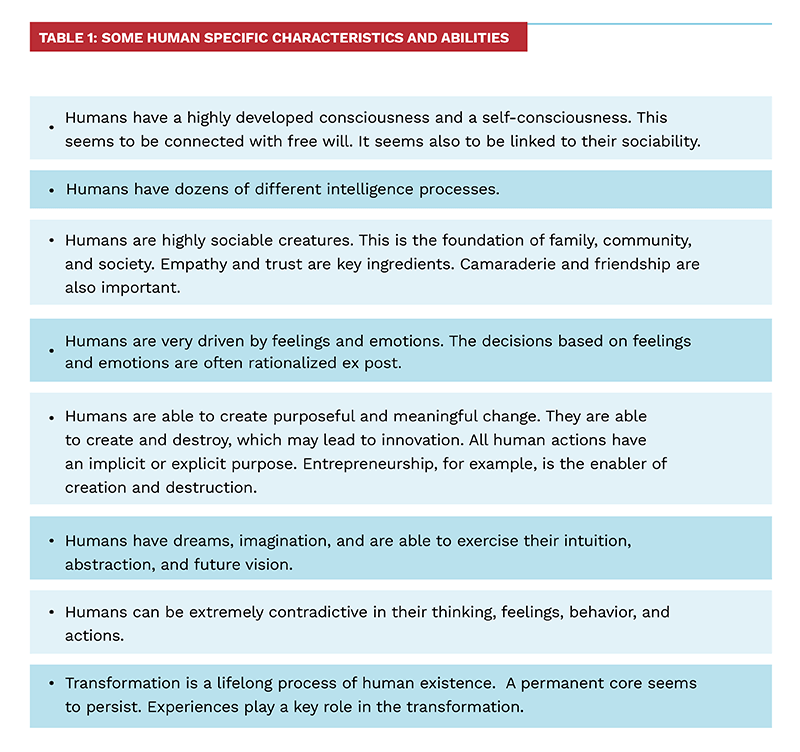
Humans are part of one or several communities and societies. They create the community and society and are shaped by them. Interaction with other people is an existentially important part of their life. Communication is an important and necessary element of their social life. The human brain allows humans to think critically and creatively in a way that does not need to be programmed.
We have still many unanswered questions.
- What makes a human an individual?
- What comprises the self?
- How does personal identity persist for a lifetime?
- What is consciousness and is there a
“carrier” of individual identity? - What is the role of relationships?
SOME UNIQUE TRAITS AND CHARACTERISTICS OF HUMAN SOCIETY
We, as humans, have similar appearances but are all very unique in essence. If we are looking at collaborative intelligence, (i.e., close cooperation and co-creation of humans and smart systems and machines), we need to consider what each side brings to the party. For sure, the outcome will be greater than just the sum of both parts. Thus, we need to talk about this possibility rather than considering complementarity or replacement.
One of the key challenges (or perhaps a problem) for humans is not only about what we know and who we are, but worse—what we want to be.5 Human beings are highly complex, evolving, transforming, and dynamic entities. Human communities and societies are also highly complex systems. Complexity can be analyzed from an individual perspective but also from other aggregates surrounding the person like organization, community, or the larger society. Kathleen Wallace even claims that we are a network.6 The latter, add layers of complexity to the individuals.7
Bear in mind that we are still far away from having a comprehensive theory of life, and moreover, further away from a comprehensive theory of mental states, processes, and behaviors in humans. Therefore, it is not surprising that human uniqueness, partially shared by animals, is escaping an overall general exploration. Not only that we miss a clear accepted definition of consciousness, but we are plagued with proxy definitions and descriptions from different angles and disciplines. Life and consciousness seem to be somehow linked. It looks like there is a relation between the level of complexity of the brain, the nervous system, and consciousness, and intelligence/other mind processes. Furthermore, and increasing number of studies point out that gut bacteria also play a role in explaining our complex decision making processes as another possible key player. We know that people and microbes live together in a symbiotic relationship. There are trillions of microbes in our gastrointestinal tract, around 90 per cent are bacteria. Researchers report that gut bacteria have a number of important functions such as breaking down food, manufacturing vitamins and training our immune system. An imbalance in gut bacteria has been linked to a number of health and behavioral problems including obesity, mood disorders, and altered immune response (Holmes & Rosewarne – “Gut bacteria: The inside story).8
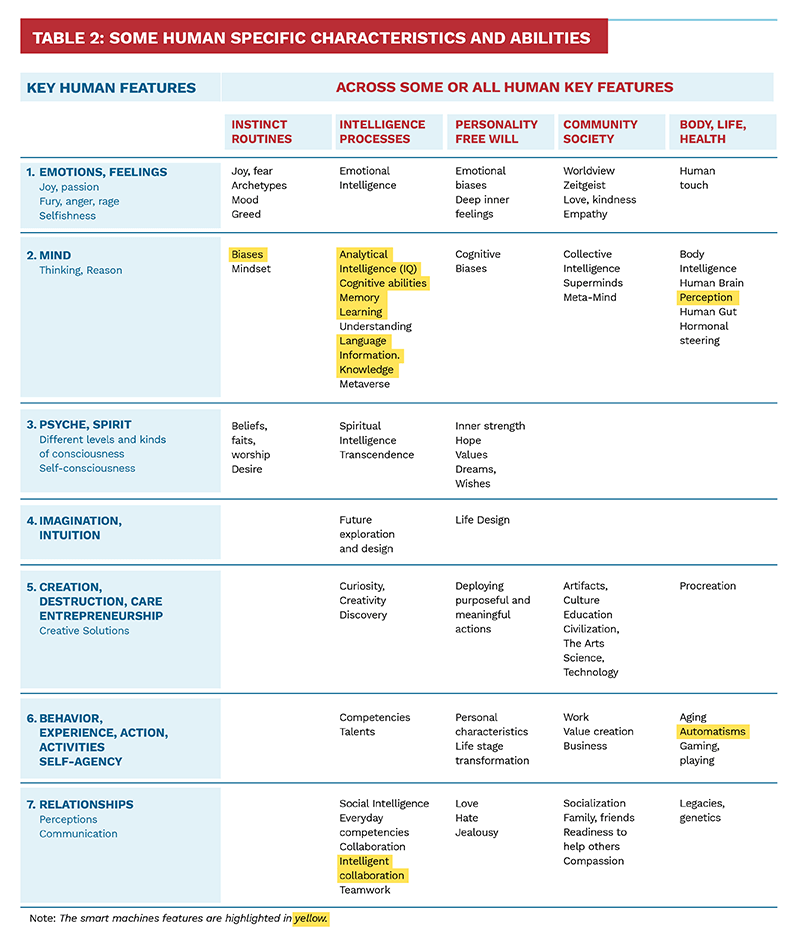
MORE ON INDIVIDUAL UNIQUENESS AND THE UNIQUENESS OF THE HUMAN SPECIES
Humans are complex biological and psychological entities. As Tattersall underlines “human come in infinite mental varieties”9 But the social level adds even more complexity to the human existence. Tattersall insists that on one side, humans need the ability to understand, predict, and manipulate the behavior of other members of their own species to survive from day to day. On the other, side insights into the motives are an essential ingredient of human social behavior.10 Bregman, in his exceptional essay “Humankind” points out that human beings are ultrasocial learning machines, born to learn, to bond, and to play.11 Most importantly, they have developed their ability to work together.12 Bregman argues in his book that people are hardwired to be kind, and deep down, they are decent. The latter generate hope for the innate ability of people to deal constructively with the existential threats ahead of us. On top of everything, many human characteristics are contextual. People’s perceptions and worldview are often biased. Our beliefs, our worldview, our values and our feelings have an influence on what and how we perceive and understand our environment.
Communities and the society, as mentioned earlier, are also highly complex systems. Family represents our rudimental source of values and behavior, and the community may strengthen it. Behavior is the door to the inner world of other people. Behavior, communication, and experience are shaping our consciousness. Each person seems to be in a special privileged position” with regard to his own thoughts and feelings, a position than no one else could ever occupy.13
Individuals are nothing without other relevant people and human society. We need also to differentiate between human uniqueness on the individual level and the uniqueness of the human species. Individuals have unique relationships with other individuals. These relationships vary and can change over time. Individuals can also be members, at least temporarily, of several different societies. Society is mostly a semi-open system; it can range from serval hundred’s, or thousands of members to millions and much more. Language, culture, traditions, and religion are the most critical differences.
Jessica Flack, Professor and Director of the Santa Fe Institute, claims that in complex systems, the last thing that happened is almost never informative about what is coming next.14 Individual humans are deeply entangled in their communities and each one has his/her individual web of relationships. This web is dynamic, adapting to new situations and internal as well as external factors. This is largely also due to the fact that the social context is in permanent transformation. Each individual brings their personal uniqueness to the web of relationships and its Metaverse, to the community, and to society. Communities and society have their unique features as well and are subject to intense dynamics and transformation.
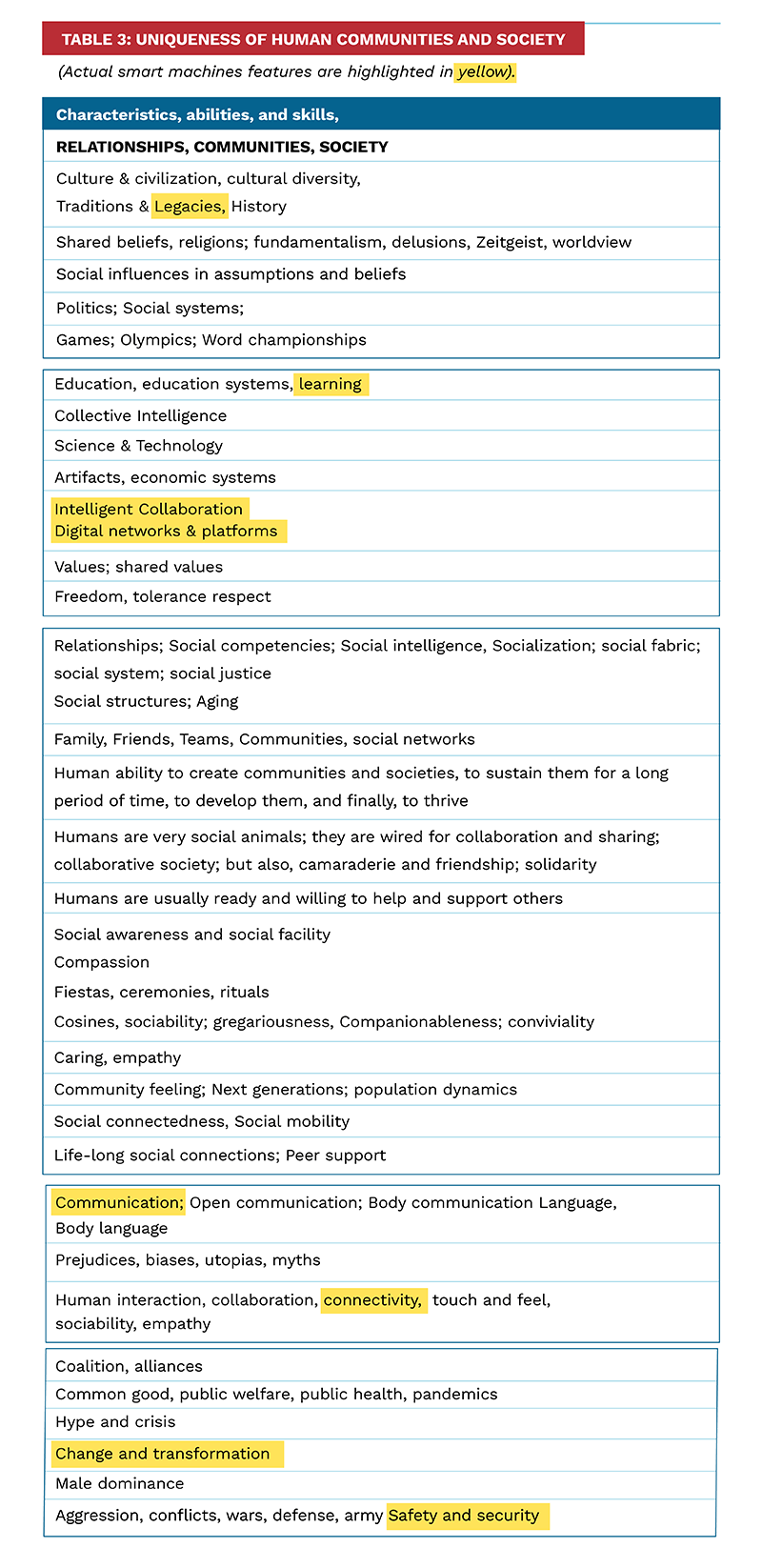 Between the uniqueness of individuals, we have the unique characteristic of other human aggregates such as two joint individuals, a team, a small or a large group, and finally the communities and the human societies.
Between the uniqueness of individuals, we have the unique characteristic of other human aggregates such as two joint individuals, a team, a small or a large group, and finally the communities and the human societies.
We argue that at the center of human uniqueness is the ability to build relationships. This begins with the relationship with oneself, relationships to other relevant people within the community and society, relationships to smart machines and other artefacts. One can even refer to relationships to the whole Universe. In sum, human relationships are unique; they are highly complex, dynamic and mutual. The most intensive are the ones from “me” to “we” (As explained in Fig. 2 below).
One could claim that human existence is all about relationships; unilateral and mutual. They allow us to have impact on our social environment and vice versa. We have relationships with the outside, with the outer world; we are at the same time part of it. We have relationships with other people, (i.e., our friends, partners, family, the community we live in) and at the same time, we are part of all of these. But we are also part of the entire human species. Finally, we have a sort of relationship with ourselves.
In comparison to other living species, the crucial differences between human and other species are not in what we’re made of, but in what we do. The context and the Zeitgeist are essential factors impacting our behaviors and actions.15 In comparison to the AI based smart machines, it is our “inner life” that distinguishes us. In the period of collaborative Intelligence, it is emotional intelligence, a human unique characteristic, that will be thriving. The latter may never be reachable for the machines.
Social and emotional intelligence are a core part of human uniqueness and the foundation of human society and civilization. They are the mortar holding human communities and societies together. Daniel Goleman claims that based on the findings of neuroscience, we can say that we are wired to connect.16 Furthermore, he argues that we should consider general intelligence merely as a derivative of social intelligence. Mathew Lieberman devotes an entire essay to the question dealing with the issue “why brains are wired to connect.”17 Steve Taylor, author of the bestselling novel, The Fall18, makes the case that humans aren’t inherently selfish; they are actually hardwired to work together.19
Human Relationships are bridges between the inner and the outer context. Size and scope of ME, WE, THEY, are dynamic, flexible, and changing proportions. They are in permanent transformation. Each, in itself, is highly complex. In other words, their relationships are adding additional layers of complexity.
Humans thrive on empathy, emotions, imagination, creativity, and entrepreneurship, which is virtually absent in even the most advanced and powerful Cyber-Entities. We believe that even ‘hyper smart machines’ will not be able to have feelings and emotions, like love, hate, happiness, sadness, etc. They will never experience compassion, jealousy, or feeling sorrow and regret. They will not be inspired, enthusiastic or passionate; neither be optimistic or pessimistic. No doubt they will be able to mimic feelings and emotions, but not more than that. Neither will they have conscience and a sense of remorse. In one-word, human emotions will remain human forever.
In this respect, animals are closer to humans than the intelligent machines. On the other hand, someday machines will be able to help increase people’s happiness, overcome depression, or deep pain.20 They might help us make better decisions.21 They might be able to increase cognitive powers and help sustain our creative fire, or entrepreneurial spirit.
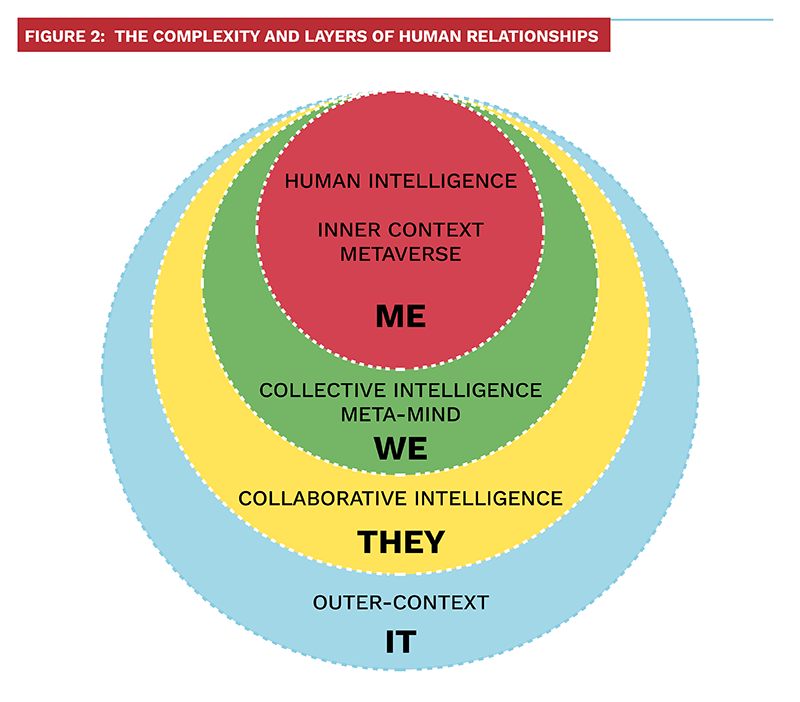
Notwithstanding, it is important to bear in mind that today’s AI applications, including the fast-spreading business applications, are still in an emerging stage; they are based on simple AI moving into multiple factor AI, like the autonomous cars. As Daniel Faggella, the founder and CEO at Emerj clearly states, “AI is being hyped, and its potential in business is still for the most part experimental.”22 But nevertheless, we need to be aware of the fact that an AI powered Fourth Industrial Revolution will affect, complement, destroy, transform, and create millions of jobs worldwide.23
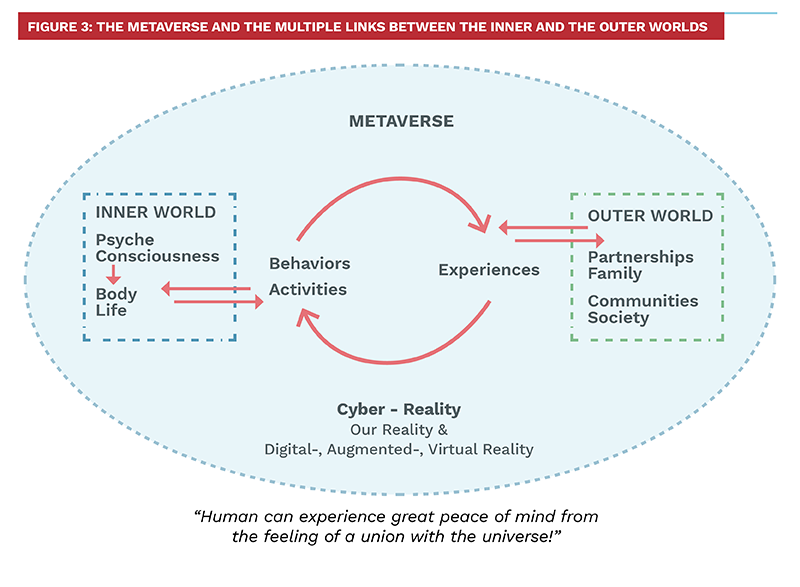
Human Uniqueness in the Metaverse
Humans live and act in their Metaverse.24 The “Metaverse” today is composed of several very different worlds: the “Multiverse”, our universe; the “virtual world”, the fast-expanding world based on the digital representation of our universe; the universal consciousness, and the “fantasy world”, based on the fiction humanity has produced. It may encompass the “dream world” as well.
The “spiritual world” is highly developed within all religions but is also an important part of individual consciousness. The virtual world may also contain a representation of the spiritual world and may develop its own spirituality in the future. People are citizens of many worlds! The concept that the Multiverse is still in evolution and the virtual world is at its infancy is worth noting.
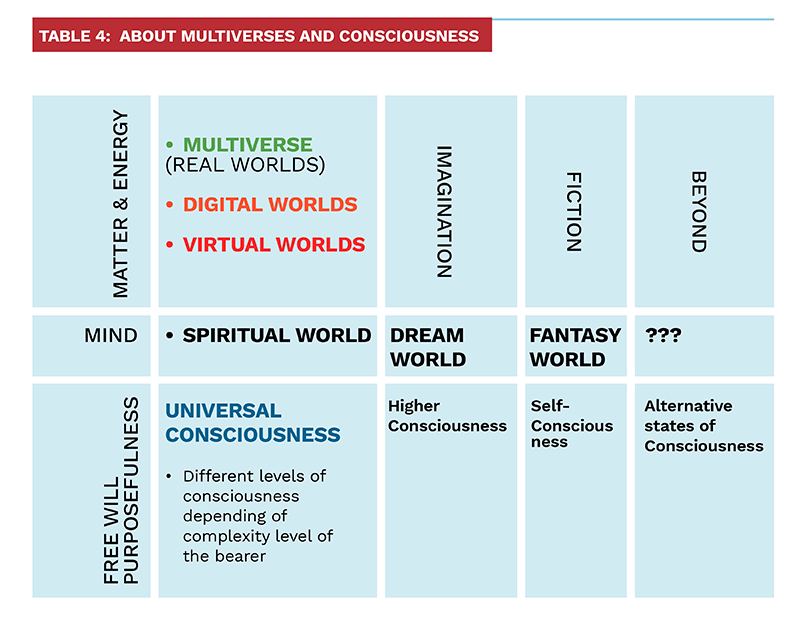
HUMAN INTELLIGENCE AND ARTIFICIAL INTELLIGENCE25
Humans are in many ways a unique species, and a singularity of nature.
General Natural Intelligence
If we take the view that intelligence is the ability to cope in a meaningful way with different situations and issues, we have a basis to compare natural and artificial intelligence. This view also allows us to have a holistic view on natural intelligence and human intelligence in particular.
Intelligence seems to be a core characteristic of life and to be adapted to the development level of living entities. Consciousness seems to be the enabler of the different forms of intelligence: innate, subconscious, conscious, and higher consciousness. Humans seem so far to be unique creatures encompassing all four forms of consciousness. But we cannot exclude the existence of higher developed living beings, or even immaterial beings. We cannot exclude the existence of other forms of consciousness.
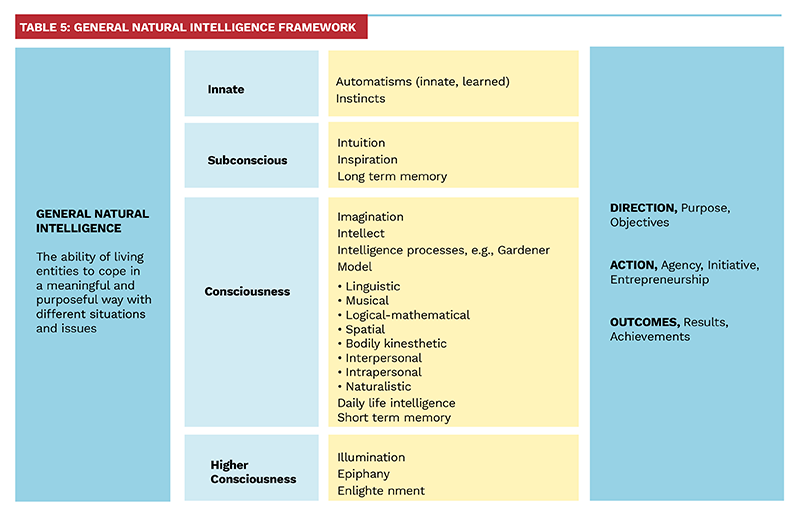 How can humans collaborate with smart machines?
How can humans collaborate with smart machines?
Computers cannot think. But increasingly, they can do things that only humans could do before. It is now possible to automate tasks that require human perceptual skills, such as recognizing handwriting or identifying faces, and those that require cognitive skills, such as planning, reasoning from partial or uncertain information, and learning. Technologies able to perform tasks that are traditionally assumed to require human intelligence are known as “cognitive technologies”.26
Instead of focusing solely on “Artificial Intelligence”, we should start thinking about artificially enabled and performed purposeful actions. Remember that all of the so-called “smart” and “intelligent” machines are actually based on algorithms. Consequently, they are just mimicking human behavior aiming to get similar or the same outcomes as humans.
If we want to compare humans with AI based “Cyber-Entities”, we need to bear in mind a holistic view on both sides. We need to look at what is unique and what is common to both sides. There is an immense amount of biological, biochemical, and neurological processes necessary to create a living entity, and this is just a small part of being a human. “Life” as such, is still a conundrum.
And there are plenty of “non-material” elements of a human being. Today we can watch humans and smart machines creating collaborative intelligence. Each side brings its uniqueness into this partnership. In the future, this will be a given in a Meta-Mind-Society. Based on collaborative intelligence, we will have smart clusters, resp, meta-clusters. Human “Super-Minds” will be leading this collaboration.
Several questions can be raised:
- Is consciousness only connected with life?
- Can machines or programs ever be conscious,
or even self-conscious? - Will they be able to become like humans? Does it make sense? Is it desirable?
- Will we be able to “download” the human brain
to a computer?
These kinds of questions might not be relevant today, because technology, which would enable it, is still in its infancy. Perhaps these are the wrong questions. All we know is that so far, the development of the so called “smart”, “responsible”, “intelligent” machines and Cyber-Entities are only “emulating” human behavior and certain human abilities. They perform certain human actions and behaviors in a similar way like humans, but the basis of their activities is very different. The use of the concept of “artificial intelligence” is misleading.
In fact, the real question that should be bothering us today is: “How far can and will Cyber-Entities replace humans, because they can do it better and more efficient than humans?” Actually, this is primarily an economic rather than an ethical question. Yet, another troublesome question that surfaces is: “What will be the Cyber-Entities’ unknown developed abilities?”
As of today, one of the big questions is, “How will we share the value created in collaboration with the smart machines?” One possible benefit is the fact that we may have a lot more free time from work. Yet, this leads to another, even more critical question: Which meaningful activities could be embedded into the new definition of work?
According to Richard Gall, an artificial neural network can process very specific data at an incredible scale, but is not able to process information in the rich and multidimensional manner a human brain can.27 AI is also still far away from learning common sense.
Roadmap of Artificial Intelligence (AI) & Cyber Reality (CR)
In some of our previous writing, we argue that we are at the beginning of the age of collaborative intelligence ever since humans and smart AI-based machines have started working together. Collaborative Intelligence (CQ28) is a combination of Human Mind (HM) (individual & collective) and Artificial Intelligence (AI) in different forms and levels. It delivers the best results leveraging the most appropriate abilities of both sides. The collaboration of humans with smart machines and programs creates new solutions way beyond our imagination, leading to meaningful life-quality enhancing products, services, and experiences.29
Hereafter, we will attempt to synthesize and present an overview of the expected AI emulating capacity mimicking human intelligence and behavior. For now, it seems that we are only at the first steps; we have only “weak AI” and very simple CR. The necessary technological basis, like quantum computing and the computer interface: “brain to computer” and the other way around, are still in their infancy. Without a doubt, we are making progress. Maybe someday “fusion intelligence” and Cyber Entities with a high level of their own autonomy may become reality.
But so far, we are struggling to develop all the desired deployments of human activities on the level of weak AI. Although, we are already able to coordinate several single AI tasks, like those necessary for an autonomous car. We also know that many projects are underway on developing a “General Artificial Intelligence”, which will be able to emulate processes of other kinds of human intelligence, like social and emotional intelligence. The question arises: “Is it really necessary and useful?” In collaborative intelligence, humans can perform this part. So, maybe it makes more sense to work on further development and enhancement on the human side? A large part can probably be emulated. But without the inner feeling; it will still be only a proxy. Probably from this stage on, most of the AI deployments will be a joint, and the frontiers of integrating human and machine input. Therefore, for the time being, we should only use the term “collaborative intelligence”, or perhaps even “advanced collaborative intelligence”.
In the next stage, the Meta-Mind certainly cannot be reached without a close collaboration of humans; in particular, the “Super-Minds” and AI driven Smart Machines. And the stage of “Fusion-Mind” is actually still very speculative.
The most important insight is that the future is about humans and machines working together. Therefore, we need to focus on both the development of both Super minds, and Smart machines and systems. In the end, the question is not about if the machines will replace the humans, but how much they can enhance human experience and increase the quality of our life.
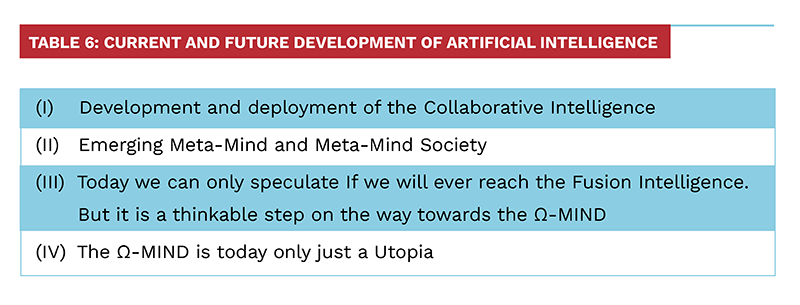 For the next leap to the Advanced Collaborative Intelligence, we need to create a new infrastructure based on new technologies. The new infrastructure will use technologies like quantum technologies, quantum entanglement, quantum computing, but also biological computing, direct connectivity, Brain-to-Brain, Brain-to-Machine, and Machine-to-Brain. A new Web will be based on quantum technologies with access to all smart things and devices. Smart 3D printing will be controlled by smart machines.
For the next leap to the Advanced Collaborative Intelligence, we need to create a new infrastructure based on new technologies. The new infrastructure will use technologies like quantum technologies, quantum entanglement, quantum computing, but also biological computing, direct connectivity, Brain-to-Brain, Brain-to-Machine, and Machine-to-Brain. A new Web will be based on quantum technologies with access to all smart things and devices. Smart 3D printing will be controlled by smart machines.
We may also see a society built on new paradigms, the “Meta-Mind-Society”, with a New Economy and New Business Models. Most industries will be highly automated. All this requires a completely new education with many human intelligence processes and unique human features enhanced as well. Furthermore, in the context of an “Advanced Virtual Reality”, seamless VR will come into being along with our-reality and will be encompassing the Metaverse.
As of today, we can see as dystopia the upcoming “Strong Lords” using and abusing the development of humans and AI to get countries and regions under control, with the aim of global control. There is a great worry of a situation getting out of control due to programming errors, and malevolent programming of AI based programs. Eventually, another dystopia would be AI based programs becoming completely autonomous and self-directed in conflict with human interests. Obviously, one cannot exclude additional development direction, which will emerge in the future, but we really need to undertake visionary simulations prior to development now.
For example, we cannot exclude that in the far future, AI might become truly intelligent and be able to operate without context. As of today, the keywords describing the AI deployments are “emulated similarity!”
The idea of “Smart Machines” equipped with an artificial intelligence higher than the human biological intelligence is quite popular with technophiles and technophobes. This point in time is named the “Singularity”, because from there, the AI is supposed to develop on its own and its development is expected to surpass the human intelligence by millions or even billions of times.
But they are forgetting that human intelligence is a tricky and debated concept. For the purpose of this paper, we are using a simplified definition. We consider “intelligence” as a process, including the use of available resources, leading to a purposeful action creating specific results. This action can be provided by humans, animals, or machines.
The Ω-Mind is where people with enhanced minds and talents are collaborating and co-creating jointly with machine intelligence and are shaping and designing the world for the betterment of humanity.
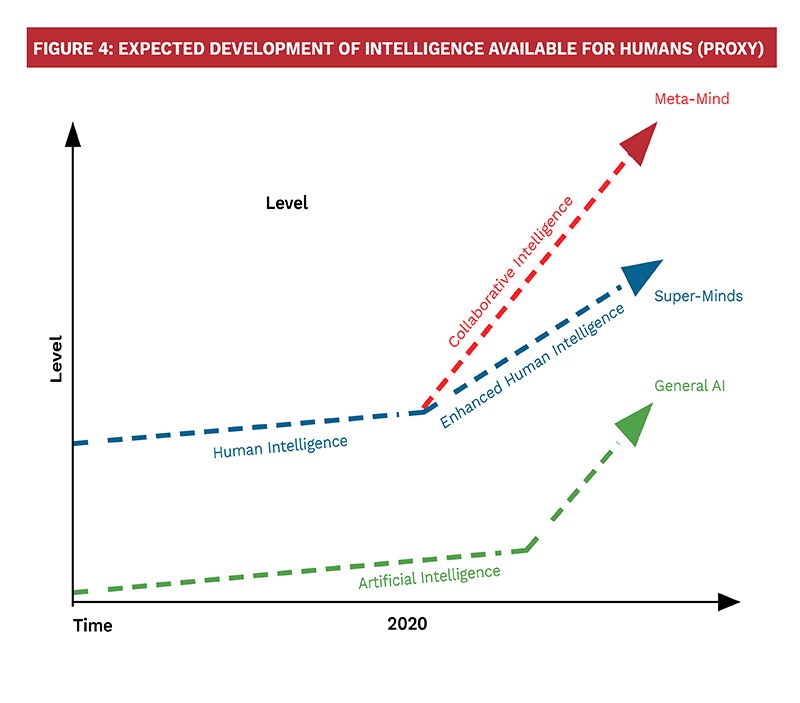 In respect to the “Human Uniqueness”, we have to bear in mind that we are far away from encompassing a theory of life, and even further away from an encompassing theory pertaining to the human mind. We employ both terms quite often, but the meaning and definitions are far from being clear; actually, we use plenty of different proxies steaming from different angles. Maybe this is an indication of a false approach? Anyway, life and consciousness seem to be tightly linked. Is it life that brings consciousness to the world, or is it the other way around?
In respect to the “Human Uniqueness”, we have to bear in mind that we are far away from encompassing a theory of life, and even further away from an encompassing theory pertaining to the human mind. We employ both terms quite often, but the meaning and definitions are far from being clear; actually, we use plenty of different proxies steaming from different angles. Maybe this is an indication of a false approach? Anyway, life and consciousness seem to be tightly linked. Is it life that brings consciousness to the world, or is it the other way around?
Comparing Artificial Intelligence directly with Human Intelligence is a big mistake because on the human side, we have a whole array of intelligence processes and on the AI side, we just have selected activities performed by AI based “Smart Machines”.
We argue that the fully-fledged human intelligence is encompassing all available and accessible resources we can get. So, potentially all AI deployment is encompassing all available resources as well, as much as they are relevant to the specific case. In this sense, the cyber savvy people have a far stronger intelligence at their disposal. This also means that the concept of the Singularity may be wrong or at least misleading.30
Nevertheless, let’s move now to focus on what is actually unique on the side of AI and AI deployment, and let’s define the future agenda by speculating on the consequences of these unique features.
So far, AI leverages many of the computer features: faster speed, higher efficiency, better and faster access and distribution, and easier and faster scaling, which leads to cheaper products, services, and solutions.
Supercomputers can analyze problems and reach solutions faster than humans, but the user has to tell them what to do. AI-based systems can not only increase efficiency, but can do it as long as it is required without signs of fatigue or losing accuracy.
The work of AI is already sometimes so complex it is impossible to understand why and how they arrive at conclusions. Researchers are working on AI programs that improve generation after generation without human input. Someday, these kinds of machines may discover new approaches to AI and develop novel machine learning that even researchers could not find.31 We have to be wary of AI created with bad intentions and those based on wrong assumptions or going bad for any reason.
We tend to agree with the statement made by Ramón López de Mántaras, “The human brain is very far removed indeed from AI models, which suggests that so-called singularity—artificial superintelligences based on replicas of the brain that far surpass human intelligence—are a prediction with very little scientific merit.”32 If we consider that human uniqueness, and that the complexity of behavior of a human being goes way beyond the brain, this statement becomes even more paramount.
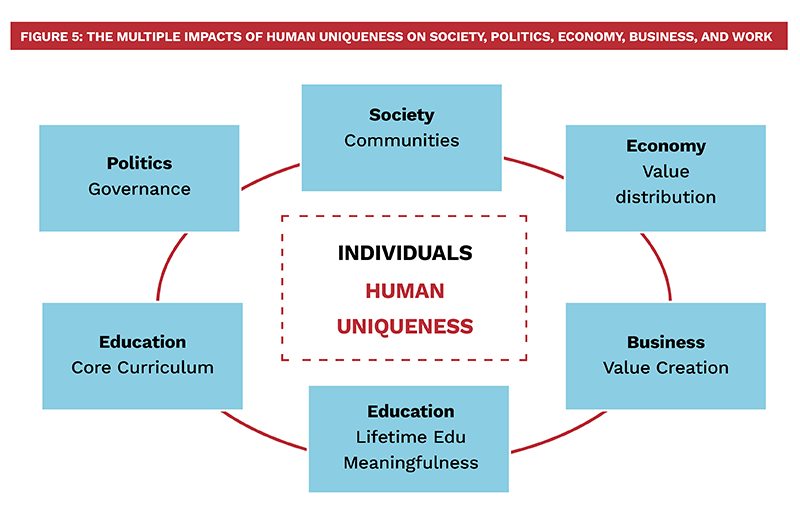
DON´T WORRY- LET´S TOAST TO HUMAN YOU-NIQUENESS: CONCLUDING REMARKS
Human individuum is a complex life entity with a large number of abilities, skills, expertise and talents—sometimes unique talents. It has personality in the making, with consciousness and self-consciousness. It has a limited duration as a dual entity consisting of biological, physiological, and psychic and mental processes.
Any individuum needs an adequate education to become a valuable part of society. Everybody is aging and eventually maturing. All human individuals are part of at least one community with different relationships to other people. They are all performing permanently different activities to exist. In this sense, existence is a permanent set of many processes keeping people alive. Most processes are independent from conscious control, they are automated; some are driven by people’s minds, others by emotions and feelings.
Humans are unique individuals with unique abilities and talents. They are members of families, communities, and society; they act as citizens, as consumers, and work within organizations, businesses, and workforces, or on their own. Individuals are creating and shaping the society they are part of, and they are shaped and formed by this society. It is mutual interdependence. Society does not exist without its human members, and they need society to survive. Society and all social organizations consist of a myriad of unique individuals. Most of them are performing roles requiring only a small part of their abilities and talents. They are forced to take these roles by mostly uncontrolled circumstance or wrong self-assessment, making themselves and the organizations they work for unhappy.
The more the collaborative intelligence will dominate human activities, the more it will be important to develop and deploy human uniqueness. Which means, it is important to find out where the smart machines and programs will be better, where humans are better, and in particular, where they are better working together.
Some people will be excellent in their role and may become Super minds. Some will want to work for the common good any may become members of the Meta-Mind-Academy. Human uniqueness and Collaborative Intelligence will lead to a Meta-Mind-Society.
Society, culture, and governance have a big impact on the direction of the development and deployment of individuals. The biggest role will be that of education. People can always be exposed to the arbitrariness of state-run organizations. Even in the most liberal and democratic countries, the free development of individuals depends very much on the quality of the people in power. Do they use it for the common good or for personal advantage? Are the responsible leaders respecting the citizens? Do they abuse their power for personal enrichment? Do they respect the laws and rules? Despotism is primarily a personal characteristic, independent of the function and form of government. History has shown that too much power and its extended duration tend to corrupt most of people. Personal integrity and a sense of social responsibility are decisive factors. This is true not just for people leading governments, but also for any kind of organization.
Economy and business will increasingly focus on Collaborative Intelligence. This means the role of the individual will be changing, and the role of human uniqueness will be growing fast. Maybe for the first time in human history, work will be shifting form necessity to privilege. Collaborative intelligence will at least allow us to reduce the time we have to work. This will lead to more time for leisure, but also for self-development and self-actualization. This presupposes a different model of value sharing. People will have to get a fair part of the value generated through collaborative intelligence and artificial intelligence.
Lifetime education, including self-development and self-actualization will be considered as part of work. On the other side, work will be considered as an important element of individual development and self-actualization, supporting one’s life quest and fulfillment. Anyway, work is an important and meaningful activity in human life.
The entire process of hiring, developing, and deploying talents will most likely change. It may well become much more focused on access to the right talents for the right purpose than employment. Super minds will become informal but powerful, often just temporary, leaders.
Corporate and post formal education will be much more focused on human uniqueness.
Curiosity and the joy of creation are the two principal drivers of education. Education is a core element of the context; at the same time, it is a key context driver. It is a shaper of culture, civilization, and society, and has a key impact on quality of life. But education is a key factor in shaping and transforming our uniqueness as well. In particular within the “We” and “They” area.
About the Authors

Mario Raich is a Swiss futurist, book author and global management consultant. He was a Senior Executive in several global financial organisations, and Invited Professor to some leading business schools like ESADE (Barcelona). He is the co-founder and Chairman of e-Merit Academy (www.emeritacademy.com) and Managing Director for the Innovation Services at Frei+Raich Ltd. in Zurich. In addition, he is a member of the advisory board of the Global Future of Work Foundation in Barcelona. Currently he is researching the impact of Cyber-Reality and Artificial Intelligence on society, education, business, and work.

Simon L. Dolan is currently the president of the Global Future of Work Foundation (www.globalfutureofwork.com). He held the Future of Work Chair at ESADE Business School in Barcelona, and before that taught for many years at McGill and Montreal Universities (Canada), Boston and University of Colorado (U.S.). He is a prolific author with over 75 books on themes connected with managing people, culture reengineering, values, psychological health, and coaching. His full c.v. can be seen at: www.simondolan.com. He is currently the president of the “Global Future of Work Foundation”, a not for the profit ”Think Tank” enterprise.

Dr. Dave Ulrich is the Rensis Likert Professor, Ross School of Business, University of Michigan, and Partner at the RBL Group (http://www.rbl.net). He has written over 30 books and 200 articles on talent, leadership, organisation and human resources. In his writings and consulting he has shaped the HR profession, defined organizations as capabilities, and shown the impact of leadership on customers and investors.

Claudio Cisullo is a Swiss-based serial entrepreneur and investor. He is the founder and Chairman of CC Trust, a family office invested across the biotech, leisure, pharmaceuticals, professional services, real estate and technology sectors. Among his most recent investment is Chain IQ Group, a globally active provider of procurement services.
References
- 1. Mario Raich , Simon L. Dolan (2008) Beyond: Business & Society in Transformation. Palgrave Macmillan
- 2. Mario Raich, Simon L. Dolan, Claudio Cisullo and Bonnie Richley (2019) Beyond Collaborative Intelligence we can see a Meta-Mind Society Surfacing and we can Dream of a Ω-Mind? (https://www.europeanbusinessreview.com/beyond-collaborative-intelligence-we-can-see-a-meta-mind-society-surfacing-and-we-can-dream-of-a-%cf%89-mind/)
- 3. Psychologists have a long tradition of researching and explaining patterns of human thinking and behavior as a function of traits individual differences. For a nice synthesis, see for example: Individual Differences | Psychology Handbooks (ed.ac.uk)
- 4. Gary Lachman, Lost Knowledge of the Imagination, Floris Books, 2017
- 5. Manuel Berdoy, Have humans evolved beyond nature – and do we even need it?
https://theconversation.com/have-humans-evolved-beyond-nature-and-do-we-even-need-it-128790 - 6. Kathleen Wallace, You are a network, https://aeon.co/essays/the-self-is-not-singular-but-a-fluid-network-of-identities?utm_source=Aeon+Newsletter&utm_campaign=118f0a1a5f-EMAIL_CAMPAIGN_2021_05_21_12_14&utm_medium=email&utm_term=0_411a82e59d-118f0a1a5f-70603021
- 7. Complexity Theory focuses primarily on the system as a whole. What makes Complex Systems “complex” is that you can’t predict what happens after their components meet: The individual components provide little evidence about the resulting patterns that could emerge. See for example: What is Complexity Theory? A brief introduction. | Perceptions
- 8. https://www.science.org.au/curious/people-medicine/gut-bacteria
- 9. Ian Tattersall, Becoming human. Evolution and human uniqueness, Harcourt Brace & Company, 1998
- 10. Ibid, p.194
- 11. Rutger Bregman, Humankind. A hopeful history. Bloomsbury Publishing 2020 p.69
- 12. Ibid, p.74
- 13. https://www.britanica.com/topic/philosophy-of-mind
- 14. Jessica Flack and Melanie Mitchell, Uncertain times; https://aeon.co/essays/complex-systems-science-allows-us-to-see-new-paths-forward?utm_source=Aeon+Newsletter&utm_campaign=1db42e374c-EMAIL_CAMPAIGN_2020_08_21_02_38&utm_medium=email&utm_term=0_411a82e59d-1db42e374c-70603021
- 15. Zeitgeist (help•info)) is a concept from eighteenth- to nineteenth-century German philosophy, meaning “spirit of the age”. It refers to an invisible agent or force dominating the characteristics of a given epoch in world history. Now the term is usually associated with Georg W.F. Hegel, contrasting with Hegel’s use of Volksgeist “national spirit” and Weltgeist “world-spirit”. Its coinage and popularization precede Hegel and is mostly due to Herder and Goethe. Other philosophers who were associated with such concepts include Spencer[year needed] and Voltaire. Contemporary use of the term may, more pragmatically refer to a schema of fashions or fads that prescribes what is considered to be acceptable or tasteful for an era, e.g. in the field of architecture. Source: Zeitgeist – Wikipedia
- 16. D. Goleman, Social intelligence, Bantam Books, 2006
- 17. Matthew Lieberman, Social: Why Our Brains Are Wired to Connect 2013
- 18. Fall, The (new edition with Afterword): The Insanity of the Ego in Human History and the Dawning of a New Era, New edition 2018
- 19. Steve Taylor, Humans aren’t inherently selfish – we’re actually hardwired to work together, The Conversation , August 20, 2020 ^
- 20. ‘Happiness Tech’ Is On the Rise. Is It Working? Raya Bidshahri, Sep 02, 2018 https://singularityhub.com/2018/09/02/happiness-tech-is-on-the-rise-is-it-working/
- 21. Roddy Millar, Neuroscience for Business Impact, 06 September 2018 https://www.iedp.com/articles/neuroscience-for-business-impact/
- 22. Daniel Faggella, Enterprise Adoption of Artificial Intelligence – When it Does and Doesn’t Make Sense, https://emerj.com/ai-executive-guides/enterprise-adoption-of-artificial-intelligence/?utm_term=&utm_medium=enterprise-adoption-of-artificial-intelligence&utm_campaign=General-Autoresponder-Email-2&utm_source=email&utm_content=&_ke=eyJrbF9lbWFpbCI6ICJtYXJpb0BlbWVyaXRhY2FkZW15LmNvbSIsICJrbF9jb21wYW55X2lkIjogIk1qeFpxZyJ9
- 23. Beyond collaborative intelligence we can see a Meta-Mind Society surfacing and we can dream of a Ω- Mind. Facts, Fads and predictions about the joint venture of Human Mind and AI algorithms, Mario Raich, Simon L. Dolan, Claudio Cisullo, Bonnie A. Richley, The European Business Review, September-October 2019
- 24. “What is metaverse”? The Economist , May 11, 2021 (What is the metaverse? | The Economist)
- 25. section is based heavily on the article “Beyond collaborative intelligence we can see a Meta-Mind Society surfacing and we can dream of a Ω- Mind. Facts, Fads and predictions about the joint venture of Human Mind and AI algorithms, Mario Raich, Simon L. Dolan, Claudio Cisullo, Bonnie A. Richley, The European Business Review, September-October 2019”. It looks at the expected future development of the Artificial Intelligence from the perspective of human uniqueness.
- 26. Cognitive technologies: The real opportunities for business Deloitte Review Issue 16
- David Schatsky, Craig Muraskin, Ragu Gurumurthy, January 26, 2015 https://www2.deloitte.com/insights/us/en/deloitte-review/issue-16/cognitive-technologies-business-applications.html
- 27. Richard Gall, Why We Should Stop Conflating Human and Machine Intelligence, https://singularityhub.com/2018/10/19/why-we-should-stop-conflating-human-and-machine-intelligence/
- 28. Collaborative intelligence, https://en.wikipedia.org/wiki/Collaborative_intelligence Christopher Isak, What is Collaborative Intelligence? https://techacute.com/what-is-collaborative-intelligence/
- 29. Beyond Collaborative Intelligence we can see a Meta-Mind Society Surfacing and we can dream about of a Ω-Mind?, Mario Raich, Dave Ulrich, Simon L. Dolan, Claudio Cisullo, Bonnie Richley, The European Business Review, September-October 2019
- 30. Mark Stair, Singularity is wrong; A new hypothesis on human intelligence. https://medium.com/datadriveninvestor/singularity-is-wrong-a-new-hypothesis-on-human-intelligence-f0dd7537a3aa
- 31. Edd Gent,, Artificial Intelligence is evolving all by itself, https://www.sciencemag.org/news/2020/04/artificial-intelligence-evolving-all-itself?utm_source=Cognitive+RoundUp&utm_campaign=971b063292-EMAIL_CAMPAIGN_2020_04_24_04_33&utm_medium=email&utm_term=0_8baf59472a-971b063292-142086752
- 32. The Future of AI:Toward Truly IntelligentArtificial IntelligencesRamón López de Mántaras, https://www.bbvaopenmind.com/wp-content/uploads/2019/02/BBVA-OpenMind-Ramon-Lopez-de-Mantaras-The-Future-of-AI-Toward-Truly-Intelligent-Artificial-Intelligences.pdf


